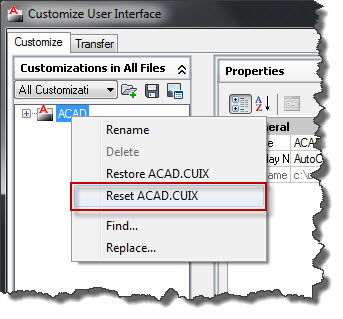Let's add some keyword options to our circle MText program. The
current version allows the user to enter a string to search for and then places a red circle around all matching MText entities in the drawing. To practice with the GetKeywords method we will let the user choose a different color for the circle from a list of choices.
Here is the C# code, note extended comments from previous versions have been removed.
using System;
using
System.Collections.Generic;
using System.Linq;
using System.Text;
using
Autodesk.AutoCAD.Runtime;
using
Autodesk.AutoCAD.ApplicationServices;
using
Autodesk.AutoCAD.DatabaseServices;
using Autodesk.AutoCAD.EditorInput;
using
Autodesk.AutoCAD.Geometry;
namespace SLD_Demo
{
public class MTextTools
{
[CommandMethod("SLDcirText")]
public void SLDcirText()
{
//get current document
Document acDoc =
Application.DocumentManager.MdiActiveDocument;
//get AutoCAD database
Database acCurDb = acDoc.Database;
//get string to search for
String sldStrToSrch = SLDgetStringFromUser(acDoc);
//get color of circle
int sldCirColor = SLDgetColorFromUser(acDoc);
//start db transaction
using (Transaction acTrans =
acCurDb.TransactionManager.StartTransaction())
{
//open block table
BlockTable bt = (BlockTable)acTrans.GetObject
(acCurDb.BlockTableId, OpenMode.ForRead);
BlockTableRecord btr = (BlockTableRecord)
acTrans.GetObject(bt[BlockTableRecord.ModelSpace],
OpenMode.ForRead);
//iterate through
block table to locate mtext objects
foreach (ObjectId id in btr)
{
//open each object to
read
DBObject obj =
acTrans.GetObject
(id, OpenMode.ForRead);
//only deal with
MText objects
MText dbMText = obj as MText;
//if current object
is Mtext
if (dbMText != null)
{
String curTxtValue = dbMText.Contents;
//and if the contents include the string entered
//by user
if (string.Equals(sldStrToSrch, curTxtValue,
StringComparison.CurrentCultureIgnoreCase))
{
//draw a circle around the mtext entity
/*add an additional parameter from the last
version to pass the color index*/
SLDdrawCir(acCurDb, acTrans,
dbMText, sldCirColor);
}
}
}
//commit the
transaction so we do not leave the db open
acTrans.Commit();
}
}
//function to get text string from user
public String SLDgetStringFromUser(Document acDoc)
{
PromptStringOptions pStrOpts = new PromptStringOptions(
"\nFind What:
");
//control the prompt string options to behave
like we want
//such as allow spaces to be entered
pStrOpts.AllowSpaces = true;
//retrieve the string entered by user
PromptResult pStrRes =
acDoc.Editor.GetString(pStrOpts);
//and assign to a new string variable
String sldStr = pStrRes.StringResult;
//return the string variable to calling
function
return sldStr;
}
/*function to get desired color from user. Gets preferred
color entered as string, converts to int, and
returns*/
public int SLDgetColorFromUser(Document acDoc)
{
/*The GetKeywords method allows a selection
to be presented
to the user and requires a
matching value to be entered.
Error handling is already built
in, if an invalid option
is entered a message is displayed
and the user is prompted
again. Also, a matching value can
be the first letter (not
case sensitive) or some or all of
a keyword. A default
value can also be defined. The
Message value is important
too, this is the main message
displayed along with the list
of keywords.*/
PromptKeywordOptions pKeyOpts = new PromptKeywordOptions("");
pKeyOpts.Message = "\nSelect
color of circle ";
pKeyOpts.Keywords.Add("Red");
pKeyOpts.Keywords.Add("Green");
pKeyOpts.Keywords.Add("Yellow");
pKeyOpts.Keywords.Add("Blue");
pKeyOpts.Keywords.Default = "Red";
//call GetKeywords and pass in our options
PromptResult pKeyRes =
acDoc.Editor.GetKeywords(pKeyOpts);
//create int value to store color index
(default to red)
int sldCirColor = 1;
/*switch statement to convert the color
string
to a color index value*/
switch (pKeyRes.StringResult)
{
case "Green":
sldCirColor = 3;
break;
case "Yellow":
sldCirColor = 2;
break;
case "Blue":
sldCirColor = 5;
break;
}
return sldCirColor;
}
//function to draw circle around an MText object
public void SLDdrawCir(Database acCurDb,
Transaction acTrans, MText MtextObj,
int cirColor)
{
//define a new point object for the center
point of circle
Point3d cenPoint = new Point3d();
//use the location method of the Mtext object
to define
//the center point coordinates
cenPoint = MtextObj.Location;
//define a new Circle object
Circle textCir = new Circle();
textCir.Center = cenPoint;
textCir.Diameter = 1.0;
//assign color index the value entered by
user
textCir.ColorIndex = cirColor;
//now add the circle to the drawing (model
space)
BlockTable acBlkTbl;
acBlkTbl = acTrans.GetObject(
acCurDb.BlockTableId, OpenMode.ForRead) as BlockTable;
BlockTableRecord acBlkTblRec;
acBlkTblRec = acTrans.GetObject(
acBlkTbl[BlockTableRecord.ModelSpace],
OpenMode.ForWrite)
as BlockTableRecord;
acBlkTblRec.AppendEntity(textCir);
acTrans.AddNewlyCreatedDBObject(textCir, true);
}
}
}
To test, NETLOAD the .dll into AutoCAD and place some MText entities. Try entering an invalid keyword. Also, test out entering just the first letter of a keyword, the first few letters, or the entire string. It all works!













